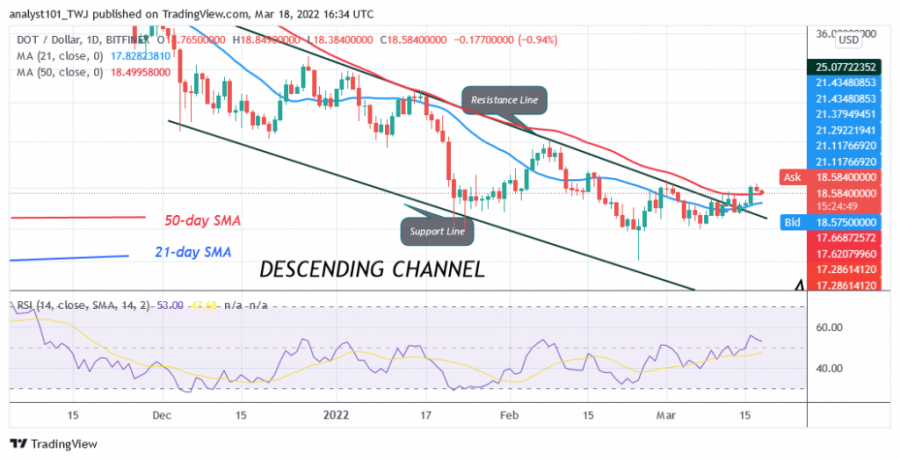Polkadot (DOT) broke above the moving averages today, but faced selling pressure at the recent high. Buyers pushed the altcoin above the moving averages on March 16, but sellers offered stiff resistance at the $19.50 high.
The cryptocurrency will come out of the downward correction and rally above $22 if the current resistance is overcome.
Today, Polkadot is bearish and if the price falls below the moving averages, the downward correction will continue. The altcoin will fall below the moving averages and regain the previous low at $16. On the other hand, if the price declines and finds support above the moving averages, a retest of the previous high is likely. In the meantime, the altcoin has fallen to the low of $18.52 and above the moving averages.
Polkadot indicator analysis
The recent retracement has pushed the crypto to the 52 level of the Relative Strength Index for the 14 period. This indicates that Polkadot is in the bullish trend zone. The current uptrend is facing strong resistance as the altcoin is in danger of falling further. Time-wise, the cryptocurrency price bars are above the moving averages, indicating a possible uptrend. DOT is above the 40% area of the daily stochastic. The market has resumed its bullish momentum.
Technical indicators:
Major Resistance Levels – $52 and $56
Major Support Levels – $28 and $24
What is the next direction for Polkadot?
On the 4-hour chart, DOT/USD is in an upward movement as the cryptocurrency has reached the high of $19.35. After reaching the recent high, an initial retracement can be observed. The bullish movement has resumed. Meanwhile, the March 17 uptrend has tested the 61.8% Fibonacci retracement level with a retracement candlestick. The retracement suggests that DOT will rise to the Fibonacci extension at 1.618 or $20.69.
Disclaimer. This analysis and forecast are the personal opinions of the author and are not a recommendation to buy or sell cryptocurrency and should not be viewed as an endorsement by CoinIdol. Readers should do their research before investing funds.
Source: Read Full Article


